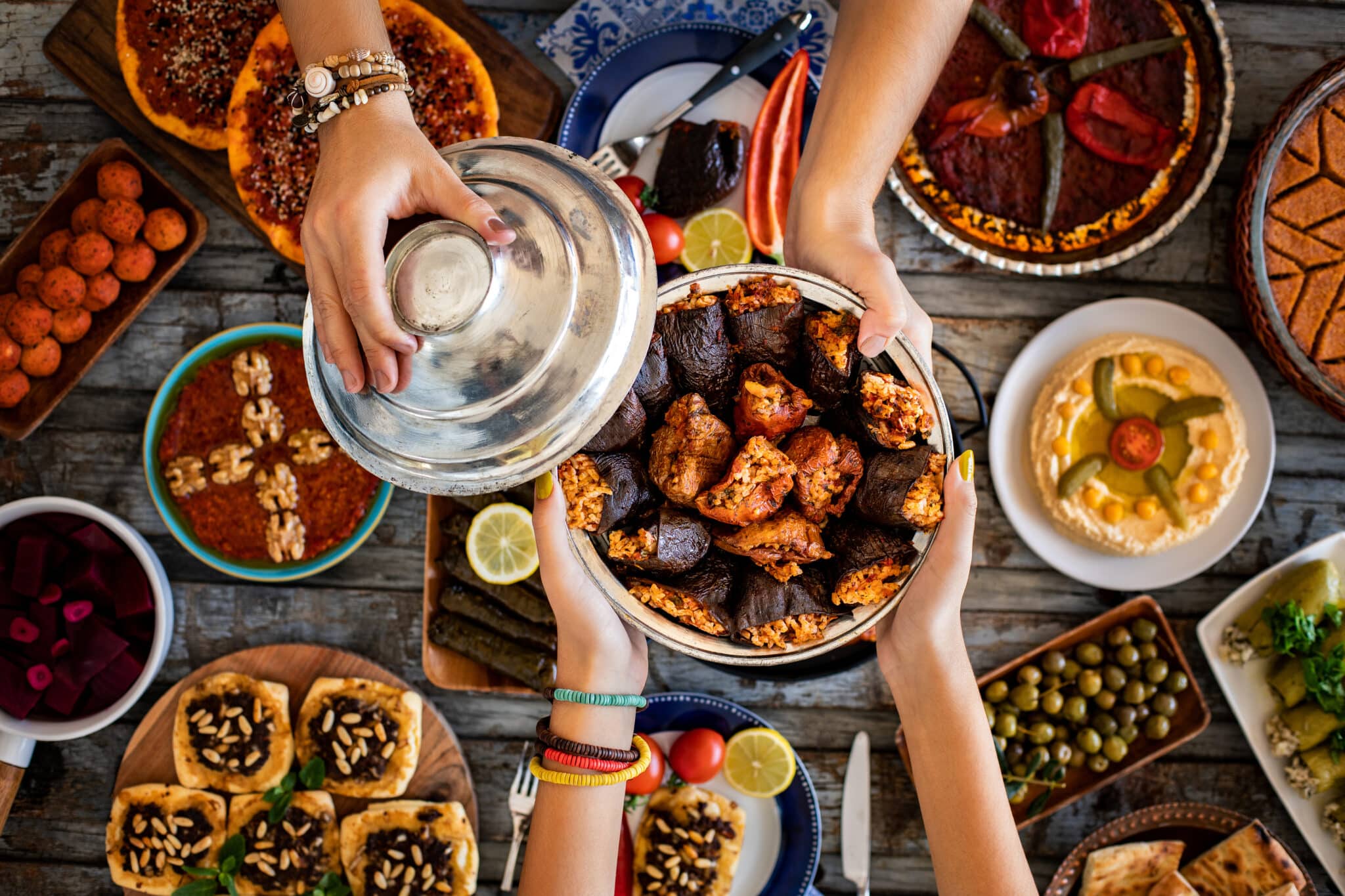Armenia, a land of ancient traditions and culinary treasures, invites you on a journey to explore its rich gastronomic heritage. Armenian food is characterized by its use of fresh herbs, succulent meats, and an array of grains and legumes, complemented by the distinctive flavors of pomegranate, lemon, apricot, and a variety of regional spices.
Heavily influenced by Middle Eastern cuisine, many of Armenia’s most traditional recipes are also enjoyed in places like Iran and Lebanon. This is not so strange. Armenia was long part of Persia’s empires and there is still a large Armenian diaspora living throughout the Middle East, helping to maintain the cultural and culinary connection. That said, Armenian food is a world of its own – drawing in Mediterranean, Turkish, and Central Asian influences, and mixing it with the best traditions of the Caucasus to create something that forms a pillar of pride for Armenians everywhere.
Whether you’re a gastronome, a curious traveler, or a student eager to explore new culinary territories, this guide will immerse you in the flavors of Armenia, inviting you to savor, learn, and discover the untold stories of this fascinating cuisine.
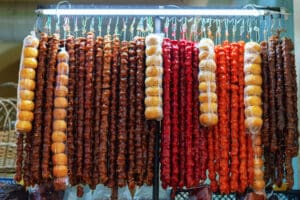
Alani: (Dessert; Snack) Alani is a distinctive Armenian snack featuring dried fruit with the pit replaced by sweetened, and often spiced, crushed walnuts. A peach is most typically used for this, although other fruits including figs and apricots are also not uncommon. These are then often strung and sold alongside sujukh, another local snack that travels very well.
Anoushabour: (Dessert) Anoushabour (which has many variations for spelling it in English, including disagreement about whether it is one word or two), is a pudding made of wheat berries and topped with chopped, dried fruit, nuts, and often pomegranate seeds. Sometimes called “Noah’s Pudding,” it is highly associated with both Christmas (which Armenians celebrate on the 6th of January) and New Year celebrations. A very similar dish is eaten in many Slavic countries called “kutya.”
Areni: (Wine) Areni is a red wine produced from the Areni grape, indigenous to Armenia, and which particularly thrives in the Vayots Dzor region. Although the grape variety is little known outside of Armenia, the wine is a pride of the country. This wine is known for its vibrant ruby color, medium body, and aromatic complexity, offering flavors of red fruits, earthiness, and a hint of spice, reflecting the unique terroir of its high-altitude vineyards.
Basturma: (Appetizer) Basturma is a highly seasoned, air-dried cured beef that is a staple in Armenian cuisine. The beef is first cured in a salt mixture, then coated with a paste called “chaman,” made from crushed garlic, fenugreek, paprika, and other spices, creating a distinctive, crumbly, boldly fragrant outer layer. Basturma is sliced thinly and served as is or with eggs as a filling breakfast or mixed into salads.
Bishi: (Dessert) Sometimes called zing-a-ling, these are deep-fried dough, something like a donut, but lighter, and served sprinkled with powdered sugar.
Bozbash: (Main Dish) Bozbash is a robust soup that melds meat, potatoes, chickpeas, and a variety of vegetables, infused with a tang from sour plums or quince. The dish is slowly simmered, allowing the flavors to mix and the meat to become tender.
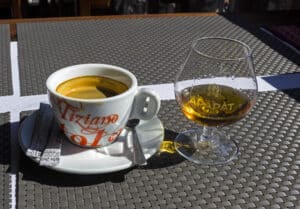
Brandy: (Spirit) Armenians take brandy very seriously. The best-known brand is Ararat, which is exported throughout Eurasia and well known throughout the former USSR. It is made from a variety of local and international grapes, aged in oak barrels, and hails from the famed Ararat Valley. It’s celebrated for its smoothness, rich flavor, and aromatic bouquet, often compared favorably with top French cognacs, and has become a proud symbol of Armenia.
Chanakh: (Dairy Product) Chanakh is a soft, tangy, brined, aged cheese. It’s related to lori cheese, but is heated only once, giving it a softer texture. It is also aged for at least two months before consumption. The result is a mature taste that pairs well with Armenia’s abundant fruit and wine.
Chilis: (Seasoning) Armenian cuisine utilizes a variety of chilis to add heat and complexity to its dishes. From the mild and fruity Aleppo pepper to the more intense Urfa biber, each chili offers a different level of spice and a distinct flavor profile. Marash pepper, with its sharp heat and fruity undertones, is another favorite, often used to season meats and vegetable dishes.
Chechil: (Dairy Product) This pulled, brined cheese is chewey, stringy, and travels very well. Often smoked and/or served in fun braids, it is often eaten as a snack or paired with wine or beer.
Choereg: (Bread) Choereg is a traditional Armenian braided bread, particularly associated with Easter but enjoyed year round. This bread has a unique, slightly sweet taste and a soft, brioche-like texture. While it can be made more simply, for holidays it is often infused with distinctive flavors from mahlab (ground cherry pits) and nigella seeds. It’s often shaped into individual rolls or larger braided loaves, perfect for pulling apart and sharing.
Eetch: (Side Dish) Eetch is a bulgur wheat salad richly seasoned with tomatoes, onions, and a variety of herbs, particularly parsley, and then dressed with lemon. This is a dish that’s both hearty and refreshing, with a satisfying texture and a burst of bright flavors. This essentially a vegetarian version of the meat-based kheyma.
Eggplant Rolls: (Side Dish) These are a delightful and elegant side dish, featuring thinly sliced eggplant grilled or roasted, then rolled with a filling of seasoned walnut paste, and sometimes dressed with pomegranate seeds or a garlic yogurt sauce. The dish is as visually appealing as it is flavorful.
Fasulya: (Main Dish) Fasulya is green beans, stewed with beef or lamb, in a rich tomato-based sauce with garlic, onions, and, most often, allspice. It is often served with rice or bread that is used to sop up the aromatic sauce.
Fenugreek: (Seasoning) Fenugreek, with its slightly sweet and nutty flavor, is integral to Armenian spice blends. It’s used in pickles, bread, and traditional dishes like basturma, lending a subtle yet distinctive taste that is both earthy and aromatic.
Gata: (Dessert) Gata is the Armenian national desert. It can be thought of as a dessert khachapuri – starting with a rich dough made of flour, butter, sugar, and yogurt or sour cream, that is then filled with sugar and/or honey, butter, sometimes ground nuts, and often flavored with vanilla or mahleb (ground cherry pits). Gata comes in various forms – from giant wheels to delicate personal-sized rolls. You’ll find it being sold at stands at nearly every tourist attraction and historical site in Armenia. The decorative discs travel well and make a great souvenir to take home!
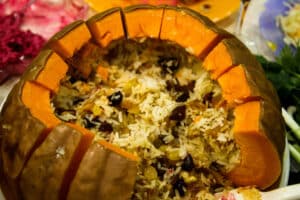
Ghapama: (Main Dish) Celebrated for its presentation and taste, ghapama is a pumpkin dish where the pumpkin is hollowed out, then filled with a sweet and savory mixture of rice, dried fruits such as apricots and raisins, nuts, spices, and often a hint of honey before being baked.
Goat Cheese: (Dairy Product) Goat cheese is fairly common in Armenia and is known primarily as a product of the Vayots Dzor region. It pairs well with fruity white wines.
Harissa: (Main Dish) Harissa is a cherished Armenian comfort food. Wheat is slow-cooked with tender, pulled meat, usually chicken or lamb. The mixture is continuously stirred and simmered, creating a thick, porridge-like consistency with a deep taste. It is most often eaten for breakfast.
Jajukh: (Salad) Jajukh combines diced cucumbers with thick yogurt, garlic, and mint. It’s creamy salad-going-on-soup that’s often served during the warmer months.
Kadayif: (Dessert) Kadayif is actually a group of desserts marked by the use of shredded phyllo dough. Usually served as a crumbly ball, the dough can be mixed with nuts, sweet cream, or cheese.
Khash: (Soup) Khash is a thick soup made from cow or sheep feet, which are simmered overnight to extract a rich, gelatinous broth. The powerful texture is coupled with sharp tastes, as it is seasoned with garlic and usually served with crisp, tangy radish. The soup is Armenia’s chicken noodle – believed to be an excellent weapon for fighting fevers and colds.
Kheyma: (Side Dish; Appetizer) Kheyma consists of finely minced raw beef or lamb mixed with bulgur wheat, onions, and a blend of seasonings, including paprika, cumin, and sometimes red pepper. The mixture is kneaded together until it reaches a paste-like consistency, allowing the flavors to meld and intensify. It’s typically garnished with fresh herbs like parsley and served with a wedge of lemon.
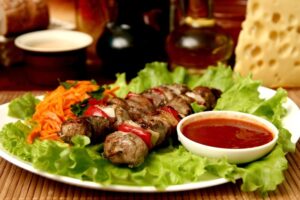
Khorovats: (Main Dish) Khorovats is Armenian barbecue, featuring skewered chunks of meat, often pork, lamb, or chicken, that are marinated in sour or tangy sauces and grilled over an open flame. The meat acquires a smoky flavor and a charred exterior while remaining succulent inside.
Keush: (Sparkling Wine) Keush originates from the high, sunny elevations of the Vayots Dzor region, which has both limestone and volcanic soil. This blend of natural forces gives rise to the native Armenian grape varieties like Voskehat and Khatouni. The cool climate and mineral-rich soils contribute to the sparkling wine’s crisp acidity and complex flavor profile.
Kofta: (Main Dish) These cutlets are a savory blend of minced meat, typically beef or lamb, combined with fine bulgur or rice, and a medley of spices and herbs. Shaped into balls or small patties, kofta is then grilled, fried, or baked.
Lahmajouns: (Main Dish) Often referred to as Armenian pizza, lahmajouns is a thin, crispy flatbread topped with a flavorful layer of minced meat, typically beef or lamb, combined with spiced tomatoes, onions, and bell peppers. It’s baked quickly in a hot oven, resulting in a savory, slightly spicy dish that’s popular as a snack or light meal, often rolled up with greens and lemon juice before eating.
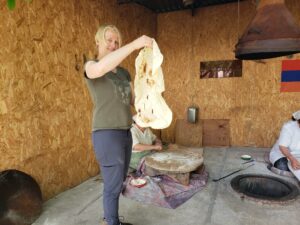
Lavash: (Bread) Lavash is a not just flatbread, it is a symbol of Armenian culture. Thin, soft, and subtly flavorful, it is made from just flour, water, and salt. It is baked in a tonir (usually refered to in English as tandoor), a large clay oven that opens at the top. The baker must expertly reach in and stick the lavash to the hot side to cook – and then retrieve it at the right moment to achieve the perfect combination of chewiness and crispiness. The oven itself is traditionally woodfired, giving the lavash even more flavor. Lavash emerges as a large, supple sheet that can be wrapped around various fillings or used to scoop up meats and dips. This is bread is featured at almost every meal in Armenia.
Lori: (Dairy Product) Lori cheese is a semi-firm brined Armenian cheese. It has an elastic, slightly chewy consistency and the brine leaves it salty. Named for the Lori region of northern Armenia, it is often used in pastries such as khachapuri in Armenia or served on its own. It is related to chanakh – the difference being that lori is heated twice and chanakh twice, giving the later a firmer texture.
Mahleb: (Seasoning) Mahleb is made by breaking open the pits of black cherries and grinding the seed therein. The flavor is slightly bitter, adding both a cherry and almond taste. It is common especially in Armenian desserts. The powerful flavor is lost fairly quickly, so if getting this for yourself, buy it in small quantities or get whole seeds and keep them frozen until ready to use and grind them yourself for best results.
Matnakash: (Bread) Sometimes called “Armenian fingerprint bread” for its distinctive shape and design, Matnakash is leavened bread, known for its soft, fluffy interior. It’s often served alongside soups and stews, or simply enjoyed with a spread of butter or cheese.

Manti: (Main Dish) Manti are dumplings that, in Armenia, are meant to be both delicious and beautiful. Seasoned ground meat, usually beef or lamb, is enveloped in a thin, delicate dough. Each is shaped to symmetrical precision and arranged in a spiral pattern in a deep pan. Once baked, they are typically served in the same pan they were cooked in, topped with garlic-infused yogurt or a rich tomato sauce.
Matzoon: (Dairy Product) Matzoon is a yogurt-like dairy product that is thick and tangy. It’s a staple in Armenian households, consumed plain, used as a base for soups and sauces, or incorporated into desserts.
Mint: (Seasoning) Mint is cherished in Armenian cuisine for its refreshing and aromatic qualities. It adds a light, herby flavor to soups, salads, and meat dishes, offering a cool contrast to richer or spicier ingredients. So as to preserve its delicate fragrance and flavor, mint is often sprinkled on dishes in fresh or dried form just before serving.
Mouhalabiye: (Dessert) This dessert is similar to panna cotta and is generally acknowledged to be Middle Eastern but is also widely eaten in Armenia. It is made by thickening milk with cornstarch and sugar and is served with nuts and often rose petal jam or orange blossom water.
Mshosh: (Salad) This lentil salad is a hearty, nutritious dish, with chopped bell peppers, onions, and tomatoes. It’s protein-packed, offers a variety of textures and flavors, and is versatile. It can be eaten as a main dish for meatless meals, or served as a salad. It is also sometimes put through a processer to create a spread or, with a little chicken or vegetable broth, becomes a wonderful soup.
Motal: (Dairy Product) Motal cheese is a delicacy that had been made in the Gegharkunik region of Armenia for thousands of years. Motal cheese was traditionally aged in sheep/goat skin. This skin is called “motal” and its name was passed to the cheese. Made from sheep milk, motal is typically mixed with local herbs and aged for at least four months, giving it a rich, mature, grassy flavor. In different regions of Armenia they make it differently. For example in Lori region they make it without greens but when it is aged properly it becomes bluish greenish due to the mold.
Oghi: (Spirit) Oghi is a traditional spirit distilled from fruits or berries. Mulberry, blackberry, cornelian cherry, apricot, pear, plum, fig, and apple are just some of the variations. It is most often made from garden produce by individuals as a sort of moonshine and is similar to vodka, but much fruitier. In some of the Armenian dialects locals call it tsqi. One commercially produced brand available for sale in Armenia is called “Artsakh.”

Pakhlava: (Dessert) Along with many other countries, Armenia considers bakhlava (which they spell with a “p”) to be a national dish. You’ll find many versions of it in Armenia and many descriptions of what makes “Armenian Pakhlava” Armenian. One version you more likely to find in Armenia than other places, though, is made with a simple dough (rather than philo) and usually has just one layer of filling. The result is something perhaps more similar to a cake or cookie and goes particularly well with ice cream or whipped cream.
Pomegranate Molasses: (Seasoning) Pomegranate molasses brings a sweet and tangy flavor that is quintessential in Armenian cooking. This syrupy reduction is used to marinate meats, dress salads, and flavor stews, adding a rich, fruity acidity that balances savory and sweet elements in a dish. Fresh pomegranate seeds are also often used as garnish to add color and flavor.
Red Bean Salad: (Salad) This salad mixes cooked red beans with walnuts, diced onions, parsley, and a lemon-olive oil dressing, creating a simple yet flavorful dish.
Saffron: (Seasoning) Saffron is used in Armenian cooking to impart a luxurious golden hue and a subtle, earthy flavor to pilafs, soups, and desserts.
Sharan: (Dessert) Sharan is a traditional Armenian sweet resembling a sausage, made by threading walnuts onto a string and dipping them into a thickened grape syrup or fruit juice concentrate mixture. These travel well and make great souvenirs! They are sometimes called “sharots” in Armenian, which translates into “line up,” because the walnuts are lined up on the string. It is also sometimes called “sujukh,” which is a name given to the desert by Turkish speakers. It is sometimes used by Armenians selling it as a more international name – but locally, “sharan” is the most common name of the dessert.
Spas: (Soup) This soup is made from yogurt, egg, rice or peeled wheat, and flavored with scallions, cilantro, and/or mint. It is served cold for summer and hot in the winter and is considered comfort food for Armenians.
Sumac: (Seasoning) Sumac adds a lemony zing to Armenian dishes, imparting a vibrant color as well as a tangy and slightly sour taste that is ideal for cutting through the richness of meats or the starchiness of grains. It’s often used as a finishing spice, sprinkled over salads, grilled meats, or dips.
Sujuk: (Appetizer) Sujuk is a robust, dry-cured sausage, densely packed with ground beef or lamb, and heavily seasoned with a signature blend of spices, including cumin, garlic, and red pepper. The sausage is air-dried, developing a concentrated flavor and firm texture, making it intensely savory and spicy.
Tahn: (Dairy Product) Tahn is an Armenian drink that was carried across a large swath of Eurasia by the Turks. Also known as tan, ayran, or doogh, the Armenian recepie calles for matsoon (see the entry in this guide) to be diluted with water and seasoned with salt and sometimes pepper, mint, and other herbs. Elsewhere, yogurt or other similar substitutes are often used. Tahn is valued as an aid to digestion and way to cool down on hot summer days.
Tolma: (Main Dish; Side Dish) This word refers to a range of stuffed foods. Grape leaves, cabbage leaves, bell peppers, or hollowed tomatoes or eggplant can all be used as a vessel for stuffing that can contain rice or wheat berry, minced meat, and aromatic herbs. This dish is usually steamed or boiled.
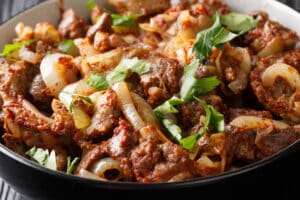
Tjvjik: (Main Dish) Tjvjik is a hearty dish made from sautéed beef or lamb liver, which is finely chopped and cooked with onions, bell peppers, and a blend of spices like paprika and cumin. The liver is cooked to a perfect tender yet slightly crispy consistency, mixed with the vegetables to create a rich, flavorful, and texturally satisfying dish.
Voskehat: (Wine) This wine gets its name from the Voskehat grape, often considered the queen of Armenian grape varieties. This wine typically hails from the Aragatsotn region, where the unique microclimate and soil composition contribute to the grape’s aromatic intensity and complexity. Voskehat is celebrated for its floral and fruity notes, balanced acidity, and elegant finish.
Za’atar: (Seasoning) While not exclusively Armenian, za’atar has found its way into Armenian culinary practice, bringing with it a nutty, herby flavor profile. This blend of thyme, sesame seeds, and sumac is often sprinkled on breads, mixed into dips, or used to season meats, offering a crunchy texture and a dynamic flavor that elevates the dish it accompanies.
Zhingyalov Hatz: (Bread) Zhingyalov hatz, emblematic of the Nagorno-Karabakh region, is a type of flatbread stuffed with a mixture of finely chopped herbs and greens. The variety of herbs can number over a dozen, including sorrel, basil, chives, mint, and cilantro, which are encased in a thin, soft dough and cooked on a griddle. This bread is a flavorful, nutritious meal in itself, celebrated for its fresh, aromatic filling.
Ziziphora: (Seasoning) Ziziphora, known for its intense aroma and spearmint-like flavor, is native to Armenia and one of that county’s more unique seasonings. Its pungent flavor is best used sparingly, but does add a unique edge to some meats, soups, and stews.
You’ll Also Love
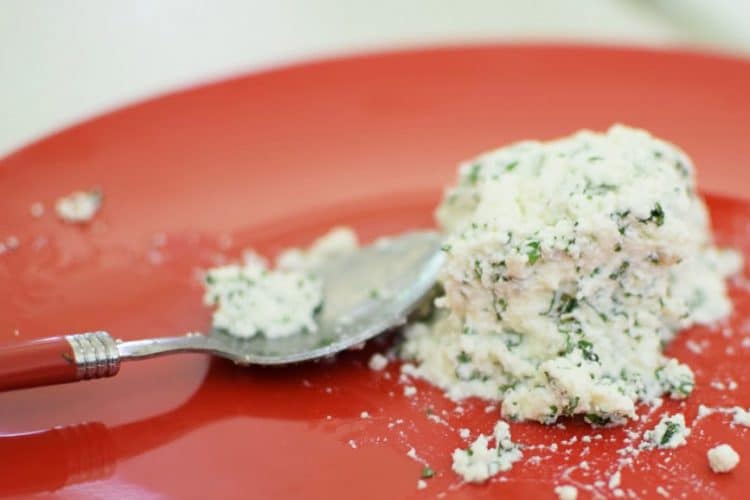
Nadugi: Never Too Much (Georgian) Cheese
Dr. Michael Denner: You can tell a lot about a cuisine and culture by the way they eat their milk… That’s the point I tried to make in our latest Georgian Cooking Club meeting, waving about a gallon of milk, sheathed in its translucent plastic carapace. My students were confused at first… Georgian Milk Milk. […]
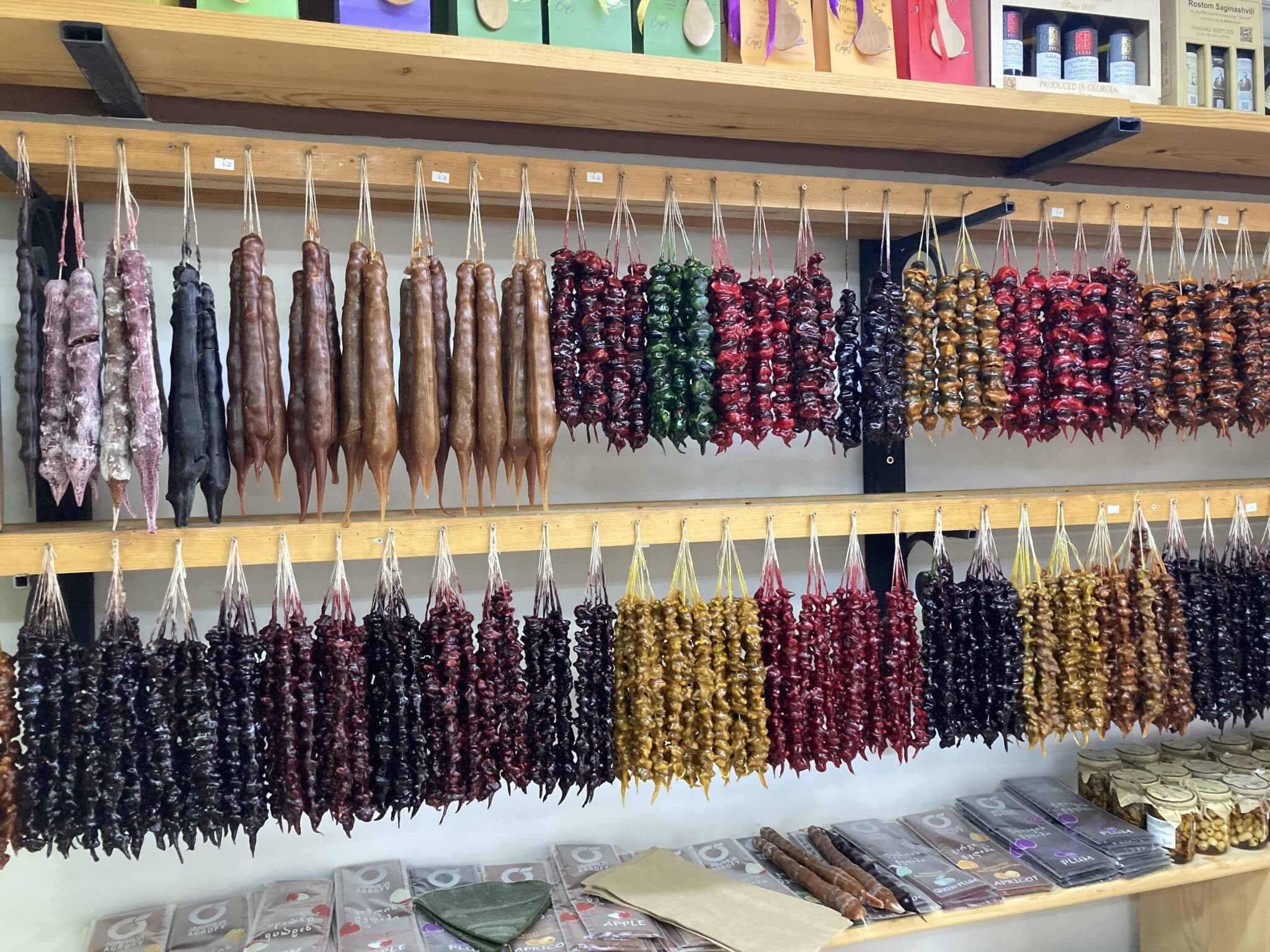
Churchkhela, Sharan, and Pelamushi: Desserts Off The Vine
Strolling through a marketplace in Georgia, you might be surprised to see the array of multicolored sausage-shaped candies hanging from the stalls. These are churchkhela, a traditional snack made by dipping strings of nuts into thickened fruit juice to create a chewy exterior. In Armenia, you’ll see “sausages” known locally as sharan that are very […]
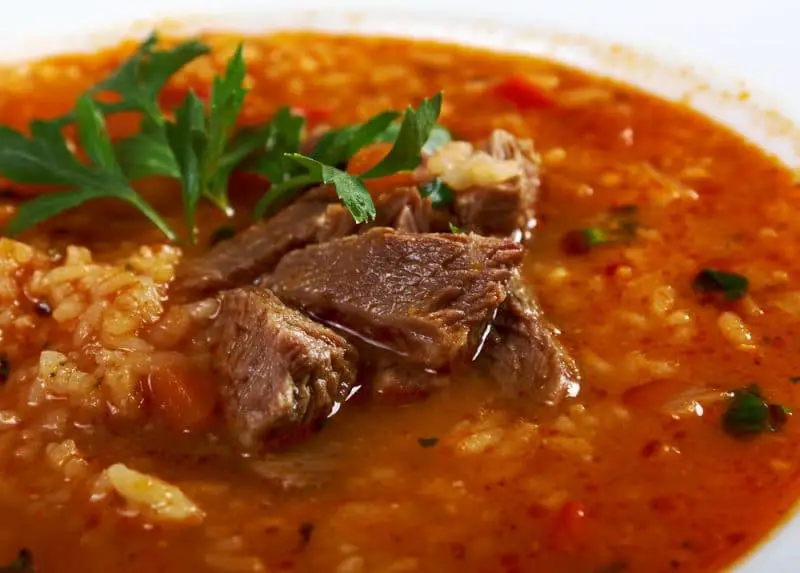
Kharcho: Georgia’s Spicy Beef Stew
For those of us who have had the singular pleasure of being seated behind a hefty bowl of kharcho (харчо), it is hard to describe exactly how delicious this Georgian delicacy really is. It is also, interestingly enough, hard to describe what it actually is, as there is rather heated disagreement about several of the […]
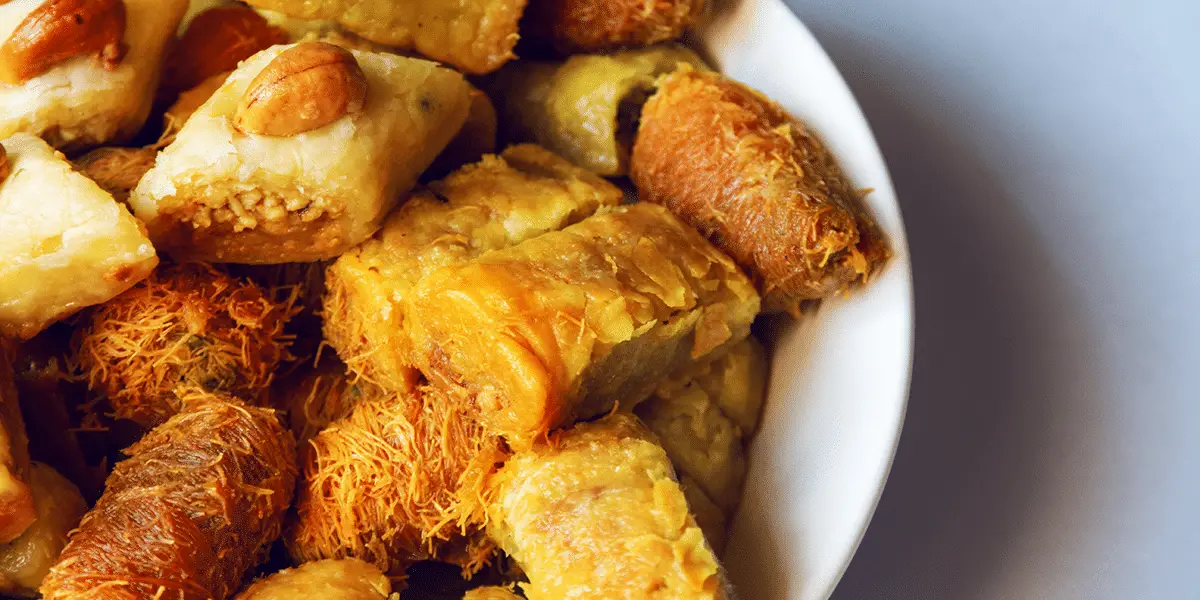
Baklava: A Sweet Cultural Controversy of Eurasia
Baklava (Баклава), is a delicate pastry served in numerous countries such as Russia, Turkey, and throughout the Balkans, the Middle East, the Caucuses, and Central Asia. The recipe for the luxurious dessert typically maintains the same components: honey and nuts placed between layers of pastry. Specific countries over the centuries have added their own specific […]
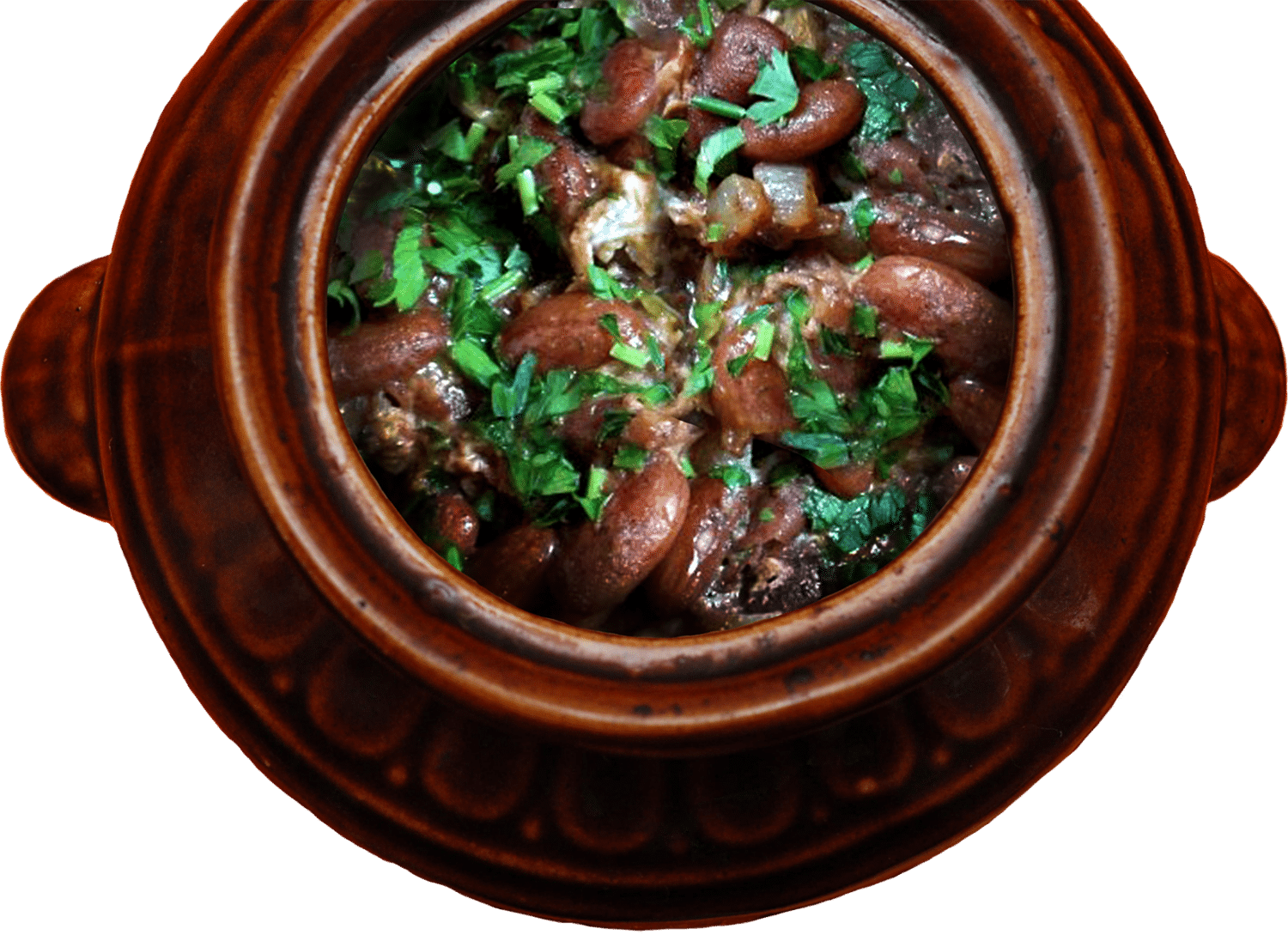
Lobio with Vinegar (Georgian Red Bean Salad)
The following is an excerpt from “Лобио, сациви, хачапури, или Грузия со вкусом“ (Lobio, Satsivi, Khatchapuri, or Georgia with Taste) by Tinatin Mzhavanadze, a best-selling cookbook author in Georgia. It has been translated and adapted by Dr. Michael Denner of Stetson University in Florida. History and Preparation of Lobio Dr. Michael Denner: Lobio (ლობიო, лобио) means […]

